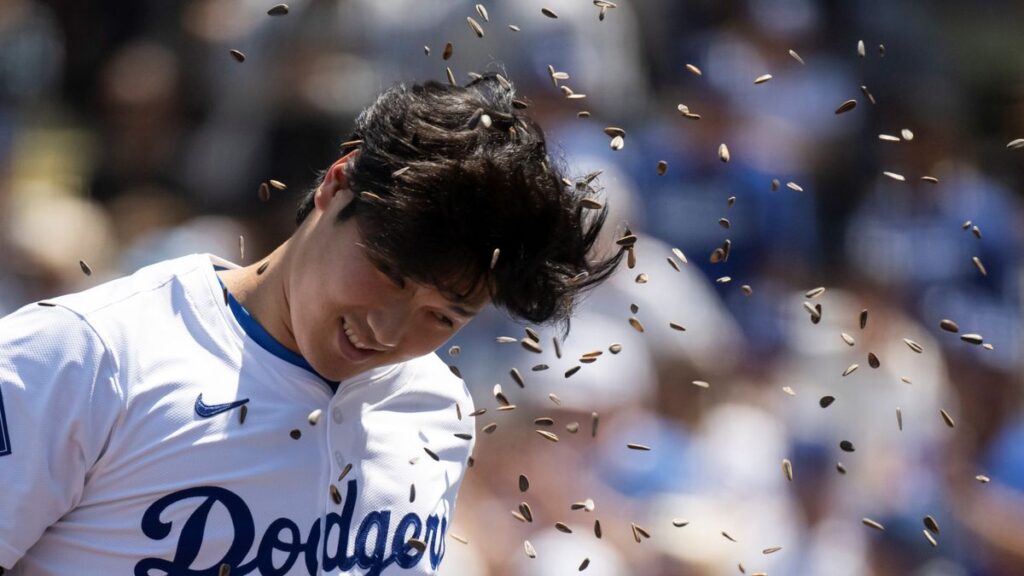
Kendo teaches children more than just the martial art of wielding a bamboo sword.
In particular, starting Kendo in the early grades of elementary school can have a great impact on not only physical but also mental growth.
For children starting Kendo at this age, it is important to have fun while learning the basics and fostering the spirit of Kendo.
In this article, we will introduce the appeal of Kendo and its basics in an easy-to-understand manner, including the benefits for children in the lower grades of elementary school to start Kendo, the necessary preparations, and even practice methods that can be done at home.
We also provide knowledge for parents and instructors to support their children, aiming for healthy growth through Kendo.
目次
- 1 Introduction: Advantages of letting children in the lower grades of elementary school start Kendo
- 2 Before starting Kendo: Necessary equipment and preparation
- 3 Basic Kendo Techniques for Children: Have Fun Learning
- 4 Kendo practice you can do at home
- 5 Key points for Kendo practice for children
- 6 Developing mind and body through Kendo: Educational effects
- 7 What parents need to know
- 8 Summary: The appeal of Kendo starting from early elementary school students
Introduction: Advantages of letting children in the lower grades of elementary school start Kendo
Starting Kendo in the early grades of elementary school has many physical, mental, and social benefits.
We will introduce the benefits that children gain by starting Kendo at this age and the appeal that Kendo has for them.
physical growth and health
Kendo is a sport that uses the whole body, and provides a great opportunity for children, especially those in the lower grades of elementary school, to promote physical growth.
Through Kendo practice, children can improve their flexibility, balance, and muscle strength, helping to develop a healthy body.
Cultivation of mental strength
Kendo is a sport that emphasizes etiquette, as the saying goes, “It begins and ends with a courtesy.”
By learning this spirit from an early age, children can develop self-control and perseverance, and have a strong will to never give up when faced with difficulties.
Also, experiencing a sense of accomplishment through Kendo training will improve your self-confidence.
In Kendo, students interact with many friends of different ages and years of experience through training at the dojo.
This kind of environment is a great place to learn cooperation and teamwork.
In addition, under the guidance of teachers and seniors, students can learn to show respect and maintain an appropriate distance from others, and develop social skills that will be useful in social life.
The charm of Kendo
Kendo is attractive not only for building physical strength and being fun as a competition, but also because it allows you to learn about history and culture.
Through Kendo, children can come into contact with Japanese tradition and the spirit of Bushido, and acquire a wide range of knowledge and education.
Furthermore, Kendo practice allows children to express their creativity and individuality even within the formal movements, which helps to foster children’s creativity and expressiveness.
By starting Kendo, children can achieve great growth physically, mentally, and socially.
It is important for parents and instructors to understand these benefits and provide appropriate support so that children can enjoy the path of Kendo.

Before starting Kendo: Necessary equipment and preparation
When starting Kendo, it is important to have the appropriate equipment and the right mindset.
These are the foundations for learning Kendo safely and happily.
Here, we will introduce a list of the equipment you need to start Kendo, and what to prepare for before going to the dojo for the first time.
List of necessary equipment
Below is a summary of the basic equipment you will need to begin Kendo.
- Shinai : Shinai is required for Kendo practice. Choose the size according to your age and height.
- Kendo uniform (jacket and hakama) : Kendo-specific clothing that is easy to move in and suitable for practice.
- Armor : A set of armor to protect the head, wrists, abdomen, and throat. If you are a beginner, your dojo may be able to lend you one.
- Tabi : These are necessary to protect your feet and prevent slipping, especially in dojos where the floor is slippery.
When a beginner starts Kendo, it is not necessary to have everything new.
Many dojos offer Shinai and protective gear rentals for beginners.
Once you have gained experience and are determined to continue practicing Kendo, it is a good idea to gradually acquire your own equipment.
Things to keep in mind before going to the dojo for the first time
- Respect etiquette : Kendo is a martial art that places great importance on etiquette. Don’t forget to say hello when entering the dojo and respect your instructors and seniors.
- Stay focused : During practice, listen carefully to the instructor and concentrate on learning the technique. Even if it’s your first time and you don’t understand many things, try to remain calm.
- Have a cooperative attitude : At the dojo, you practice with friends who have the same goal. It is important to help each other and improve each other.
- Don’t be afraid of failure : It is natural to make mistakes in the process of learning Kendo. Don’t be afraid of failure and keep trying.
Preparation and mindset before starting Kendo are the first steps to a safe and enjoyable Kendo life.
By preparing your equipment and coming to practice with the right mindset, you will be able to fully experience the depth and charm of Kendo.

Basic Kendo Techniques for Children: Have Fun Learning
Kendo is a martial art that encourages not only physical and technical growth, but also spiritual growth.
Especially for children in the lower grades of elementary school, learning Kendo while having fun leads to continuous practice.
Here we introduce basic techniques and how to practice them that children can have fun learning.
Learn basic posture (how to stand)
- Incorporate play : Learn natural body movements through “play”. While chasing each other, you will learn the basic posture of naturally keeping your body low and moving quickly.
Correct way to hold a bamboo sword
- Practice with a balloon bat : Use a balloon bat, which is lighter and easier to handle than a real shinai, to learn how to hold it correctly while having fun. Play a game where you hit a balloon with a bat and learn how to apply the correct force.
Basic how to hit (men, kote, tsuki)
- How to hit tags : When practicing hitting “men”, you put a tag (paper or cloth) on your opponent’s head and touch it with a bamboo sword. This will improve your accuracy while having fun.
- Practice with balloons : Hang up balloons and practice hitting them with claps and thrusts. Balloons move irregularly, which helps children develop their reaction speed and accuracy.
How to walk and footwork
- Rhythm play : By walking to music, students will naturally learn the Kendo way of walking (suri-ashi). Learn the basics of footwork while enjoying the sense of rhythm.
Don’t forget to bow at the end of practice
- Turn etiquette into a game : At the beginning and end of practice, you should bow, and by doing this as if it were a game, you will naturally learn etiquette. For example, children can learn etiquette while having fun, such as by having a “courtesy speed competition.”
By incorporating these fun practice methods, children in the lower grades of elementary school can naturally acquire the basic techniques of Kendo.
Learning the basics of Kendo while having fun is an important step in deepening children’s interest in Kendo and leading to long-term practice.

Kendo practice you can do at home
Kendo is basically practiced in a dojo, but it is also possible to practice effectively at home.
In particular, enjoying Kendo together as a parent and child is a great opportunity to increase the child’s motivation and strengthen family bonds.
Below, we will introduce easy ways to practice Kendo at home and how to enjoy Kendo with your child.
Confirm basic posture and swing method
- Check your form in front of a mirror : In front of a full-length mirror at home, assume a basic posture and check the correct swing. Parents and children can take turns checking each other’s form and complimenting each other’s form to increase their motivation to practice.
Practice swing practice
- Practice swing in the air : Even in a limited space, you can perform practice swings as if cutting through the air. In particular, we repeat the basic men-uchi and kote-uchi movements and focus on accurate striking. You can have even more fun practicing by competing with your child while counting the number of times.
Reaction speed training
- Play with balloons : Use balloons to play by hitting each other. By hitting the balloon lightly to prevent it from falling, you can develop reaction speed and accurate swinging. This game is very popular, especially with children.
footwork practice
- Walking around the house : Use a hallway or large room to practice walking. By avoiding obstacles such as furniture, you can develop more realistic footwork.
Parent and child etiquette practice
- Respect etiquette at home : Be sure to practice etiquette at the beginning and end of Kendo practice. By following this custom at home, you can incorporate the spirit of Kendo into your daily life. Parents and children should bow to each other and express their respect for the other person.
Kendo practice at home is a great way to complement training at the dojo.
In particular, enjoying Kendo with parents and children not only deepens children’s interest in Kendo, but also promotes communication between parents and children, and deepens family bonds through a common hobby.

Key points for Kendo practice for children
In order for children to continue practicing Kendo, it is important to maintain motivation and practice safely.
We have summarized the points below to support children’s Kendo practice.
How to stay motivated
- Set goals : Increase your child’s confidence and motivation by setting small, achievable goals and giving appropriate praise when they accomplish them.
- Find the fun : By making practice feel like a game, we provide an environment where you can not only improve your Kendo skills but also have fun.
- Cherish the bonds with your friends : We encourage friendships in the dojo and practice groups so that you can experience the joy of practicing with your friends.
Points for practicing safely
- Use proper equipment : Practicing Kendo requires the correct equipment. In particular, protective gear is essential for protecting children’s bodies, so we will always make sure they have the appropriate equipment and instruct them to wear it correctly.
- Warm up and cool down : Thoroughly warm up and cool down before and after practice to minimize the risk of injury. By warming up your body and stretching your muscles, you can practice safely.
- Thoroughly manage your child’s physical condition : It is important to pay attention to your child’s physical condition and make sure that they get enough rest and do not push themselves too hard when they are feeling tired or not feeling well.
Ongoing support
- Showing active interest : When parents and instructors take an interest in their child’s efforts and growth in Kendo and actively support them, children can stay motivated to practice.
- Providing Feedback : Provide accurate, constructive feedback and specific advice to help children objectively understand and improve their skills.
In order for children to continue practicing Kendo, it is essential to ensure that the practice itself is both fun and safe.
By keeping these points in mind to stay motivated and practice safely, children will be able to develop healthy bodies and minds through Kendo.

Developing mind and body through Kendo: Educational effects
Kendo is more than just a physical sport; it has a profound educational effect that encourages children’s mental and physical growth.
Through this martial art, children learn many valuable lessons and mature as human beings.
Here, we will consider the educational effects that Kendo has on children.
spiritual growth
- Self-control and patience : Kendo training begins with repeated basic movements. Through this repeated practice, children develop self-control and patience. By concentrating on the task at hand and performing each movement carefully, you will also develop the tenacity to achieve your goals.
- Courtesy and Respect : Kendo values the spirit of “beginning with courtesy and ending with courtesy”. Through this courtesy, children learn how to keep an appropriate distance from others, respect others, and social skills. Kendo teaches us the importance of respecting others and expressing gratitude.
- Build confidence : As your skills improve, your sense of self-efficacy increases, leading to confidence. Experiencing success in Kendo practice and competitions increases children’s self-confidence and gives them the courage to proactively take on new challenges.
physical growth
- Improves whole body strength and flexibility : Kendo movements use the whole body. Through practice swings and interpersonal training, you will especially strengthen the muscles of your arms, legs, and lower back. Flexibility is also necessary to maintain correct posture, which helps maintain balance in the body.
- Improved reflexes and coordination : Requires the ability to predict your opponent’s movements and react quickly. These reflexes and the coordination needed to accurately perform one’s intended movements are naturally developed.
- Strengthening cardiopulmonary function : Sustained exercise improves cardiopulmonary function and creates a healthy body. Kendo requires high exercise intensity in a short period of time, which leads to improved physical strength.
These educational effects obtained through Kendo will form an important foundation for children to live in society in the future.
Kendo is a valuable means of guiding children to become healthy adults by nurturing both their minds and bodies.

What parents need to know
Parents’ understanding and support are essential for children to continue practicing Kendo.
Another important point is how to choose a good dojo so that your child can start practicing in the best environment.
Below, we will give advice on how parents can support their children so that they can continue enjoying Kendo, and how to choose a good dojo.
How to support your child
- Be interested and share : It is important for children to be interested in what they have learned and experienced in Kendo, and to listen and share their stories. You can increase your child’s motivation by accompanying them to Kendo practice or cheering them on if there is a tournament.
- Preparing the correct equipment : Practicing Kendo requires proper equipment. Make sure your child has the necessary equipment to practice safely. Also, don’t forget to adjust the size and update the equipment as your child grows.
- Have a positive attitude : Don’t worry about winning or losing, instead show a positive attitude that emphasizes growth and enjoyment through Kendo. It is important for children to feel the charm of Kendo themselves and have the desire to continue.
How to choose a good dojo
- Check the qualifications of the teacher : Make sure you have an experienced teacher who can properly guide your children. Compatibility with the instructor is also an important factor for children to continue practicing Kendo.
- Look at the environment : It is important that the practice environment is clean and safe, and that there is an atmosphere where children can enjoy learning. If possible, visit the dojo in person to get a feel for the atmosphere.
- Check the curriculum : Make sure there are classes for children and that the curriculum is appropriate for their age and level. Another important point is that the environment is set up so that students can grow in stages from beginner to advanced.
Kendo provides children with a valuable opportunity not only to hone their skills, but also to develop their mental and physical growth and social skills.
If parents provide appropriate support and a good environment, children will gain rich experience and grow through Kendo.

Summary: The appeal of Kendo starting from early elementary school students
Starting Kendo in the early grades of elementary school has many physical, mental, and social benefits.
We will summarize how starting Kendo training at this age can help children grow and highlight the long-term benefits of starting Kendo.
Improved physical growth and balance
Kendo is an exercise that uses the whole body, making it an ideal sport for developing well-balanced bodies, especially for children in the early elementary school grades who are still in their developmental stages.
Muscle strength, flexibility, and sense of balance naturally improve, contributing to a healthy body.
In addition, acquiring exercise habits from a young age will lead to lifelong health management.
Cultivation of mental strength and self-growth
Kendo is not just about learning techniques, it also greatly contributes to improving self-control, patience, and concentration.
A culture that values politeness fosters social skills such as politeness and respect for others.
Additionally, by experiencing a sense of accomplishment through practice, you can develop confidence and increase your self-efficacy.
Developing sociability and cooperation
Although Kendo is an individual sport, students are required to cooperate with other children during practice and competitions at the dojo.
This experience fosters children’s coordination and teamwork, and provides an opportunity to deepen friendships.
Furthermore, interacting with people of different ages and years of experience provides a rich social experience and develops the ability to build interpersonal relationships.
long term benefits
The long-term benefits of starting Kendo in early elementary school include not only physical and mental health, but also character development.
The lessons and experiences learned through Kendo will be useful in various aspects of your studies, future career, and life.
Kendo is a valuable activity that allows children to have fun while learning the many skills they need to survive in society.
Taking up Kendo is more than just a new hobby for children.
The physical, mental, and social growth that Kendo brings will have immeasurable value for children’s futures.
It is an important role for parents to understand the appeal and value of Kendo and help their children grow to the fullest through this beautiful martial art.





